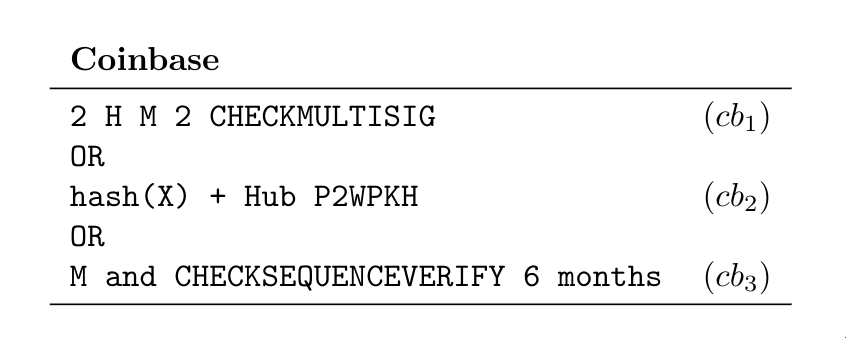FROST Threshold Signatures for Multiple Channel Updates
Chris Belcher proposed a hub based payout solution for P2Pool that won’t consume blockspace linearly with number of miners in a pool. The drawback of the approach was the requirement for a centralised hub. Belcher showed how that can be overcome using multiple hubs that each manage a fraction of the payouts. With Schnorr Signature now available in Bitcoin and advances in Threshold Signatures theory and practice, I show in this post how the hub based model will work with FROST Threshold Signatures.
Hub Based Payouts
I had slightly modified Belcher’s construction to convert the channel from bidirectional to a one way payment channel. After all, the miner doesn’t need to pay the hub. I use this modified construction in the rest of the post.
The hub based payout mechanism has two components:
- A coinbase that pays to hub and miner, or to the hub on revealing a
preimage, or to the miner after a timeout.

- Multisig payment channel like construction between the Hub and each miner.

There is also a protocol to release payments to miners once the pool finds a block. The construction doesn’t allow the hub to deny payout to miners once the bitcoin block is found. Refer to my proposal or Belcher’s post on bitcoin talk for details.
Replacing the Hub with a Federation
We ideally want to move to a fully decentralised mining pool. However, the requirement for miners to run services and maintain them is too much of a friction point. Instead, we can make substantial leaps by moving to an open source federated pool that anyone can join to help decentralise bitcoin mining and earn some bitcoin yield in the process. The full design of such a pool is still a work in progress and I will write that out in detail soon. In this post, I focus only on the part where once a bitcoin block is found the hub (the federation in our case) has to update the funding transaction with new balances for all miners.
The question has been how can we arrange a federation to sign thousands of such funding transaction using a threshold signature scheme. The answer is in precomputing the nonces (as FROST recommends) and then at the time of signing, have all the parties broadcast their shares to all other parties. Each party then has access to all the signed funding transactions.
The rounds required to generate nonces are run a priori, so they are not on the critical path of signature generation.
When we need to generate a signature, the following protocol is run. This protocol is loosely defined here to communicate the high level picture only.
- All federation members compute the new balances due to all miners.Remember this payout is for a block discovered a 100 blocks ago. So all members have built a consistent view by now of the shares from 100 blocks ago. More on how this eventual consistency is achieved in the write up about the federated pool that is coming soon.
- All members have a consistent updated funding transaction for each miner.
- Given everyone has the message and the nonces, they immediately use their current public key share that was computed earlier using Pedersen’s DKG and broadcast their share of all the signatures for each transaction to all members.
- Once a member has received all of the above broadcasts for itself, it can immediately construct the signature and hand it to the miners.
Complexity
The above has the communication complexity of $O(n^2)$ as all members send one message to all other members. However, the round complexity is one. Everyone sends all the messages in the same round. At the end of this round, all parties can generate the aggregated signature.
In case of failures, we need to run the round again and we can parallelise these rounds as proposed by ROAST.
Conclusion
Signing all the channel updates in Belcher’s construction definitely seems doable. I want to wrap up my work with FROST Federation and then simulate such a round to measure the latencies for 10, 50 and 100 member strong federation.